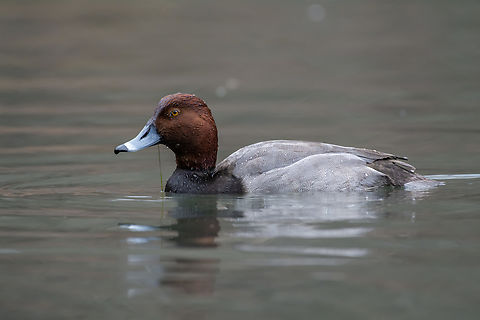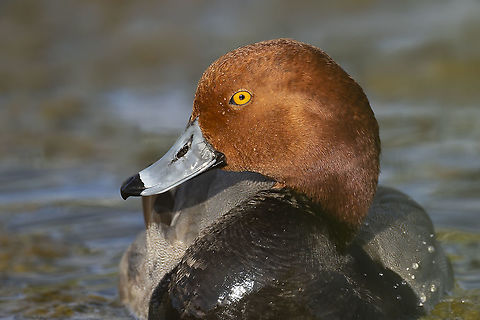
Habitat
The breeding habitat is marshes and prairie potholes in western North America. Loss of nesting habitat has led to sharply declining populations. Females regularly lay eggs in the nests of other Redheads or other ducks, especially Canvasbacks. Redheads usually take new mates each year, starting to pair in late winter.Following the breeding season, males go through a molt which leaves them flightless for almost a month. Before this happens, they leave their mates and move to large bodies of water, usually flying further north.
They overwinter in the southern and north-eastern United States, the Great Lakes region, northern Mexico and the Caribbean.
This strong migrant is a very rare vagrant to western Europe.

Food
These birds feed mainly by diving or dabbling. They mainly eat aquatic plants "Halodule wrightii" with some molluscs. Gastropods include 18% of food and bivalves include 3 % of its food.Gastropods known as food of "Aythya americana" include: "Acteocina canaliculata", "Acteon punctostriatus", "Anachis avara", "Anachis obesa", "Caecum nitidum", "Calliostoma" sp., "Cerithidea pliculosa", "Cerithium lutosum", "Crepidula convexa", "Diastoma varium", "Melanella" sp., "Mitrella lunata", "Nassarius acutus", "Nassarius vibex", "Natica" sp., "Neritina virginea", "Odostomia trifida", "Olivella minuta", "Olivella watermani", "Polinices" sp., Pyramidellidae, "Pyrgocythara plicosa", "Rissoina catesbyana", "Sayella livida", "Turbonilla" sp., "Turbonilla interrupta" and "Vitrinella" sp.
References:
Some text fragments are auto parsed from Wikipedia.